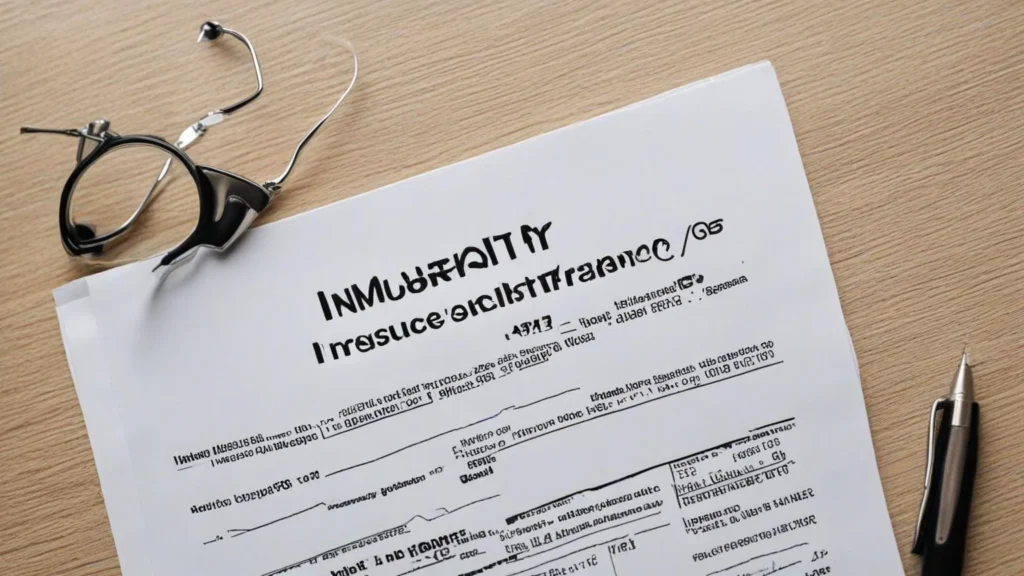Disability insurance is a crucial component of financial planning, often overlooked until it’s too late. This type of insurance offers a safety net in case you are unable to work due to a disability, ensuring a continuous income stream to support you and your family. In this comprehensive guide, we’ll explore how disability insurance works, why it’s essential, and provide a detailed step-by-step explanation of the process.
Why is Disability Insurance Beneficial?
Disability insurance offers several key benefits:
- Income Protection: It provides a portion of your income if you become disabled and cannot work. This ensures that you can still meet your financial obligations and maintain your standard of living.
- Peace of Mind: Having a safety net in place reduces stress and anxiety about the future, allowing you to focus on recovery rather than worrying about finances.
- Long-Term Security: Disabilities can be short-term or long-term. Disability insurance ensures that you are covered for the duration of your disability, providing long-term financial security.
Key Benefits of Disability Insurance

Disability insurance provides several essential benefits:
- Income Replacement:
- Purpose: The primary function of disability insurance is to replace a portion of your income if you are unable to work due to a disability. This can be a percentage of your salary, typically between 60% to 80%.
- Example: If you earn $5,000 per month and your policy covers 70% of your income, you would receive $3,500 per month in benefits if you become disabled.
- Purpose: The primary function of disability insurance is to replace a portion of your income if you are unable to work due to a disability. This can be a percentage of your salary, typically between 60% to 80%.
- Rehabilitation Support:
- Purpose: Many disability insurance policies include provisions for rehabilitation support, which can help you recover and return to work. This might include physical therapy, occupational therapy, and vocational training.
- Example: If your disability requires physical therapy, your policy may cover the costs associated with this treatment to help you regain your ability to work.
- Purpose: Many disability insurance policies include provisions for rehabilitation support, which can help you recover and return to work. This might include physical therapy, occupational therapy, and vocational training.
- Job Protection:
- Purpose: Some policies offer job protection benefits, which can help ensure your job is waiting for you when you are able to return to work. This is particularly important for maintaining your career trajectory and financial stability.
- Example: If you are on disability leave for six months, your employer is required to hold your position or provide a similar role when you are able to return.
- Purpose: Some policies offer job protection benefits, which can help ensure your job is waiting for you when you are able to return to work. This is particularly important for maintaining your career trajectory and financial stability.
How Disability Insurance Works: Step-by-Step

Understanding Types of Disability Insurance
There are two primary types of disability insurance:
- Short-Term Disability Insurance:
- Coverage Period: Typically covers disabilities lasting from a few weeks to up to a year.
- Purpose: Designed to provide quick, short-term financial support.
- Coverage Period: Typically covers disabilities lasting from a few weeks to up to a year.
- Long-Term Disability Insurance:
- Coverage Period: Covers disabilities that last for several years or even a lifetime.
- Purpose: Provides long-term financial stability if you are unable to return to work for an extended period.
- Coverage Period: Covers disabilities that last for several years or even a lifetime.
Evaluating Your Needs
Before purchasing disability insurance, it is important to evaluate your personal and financial needs:
- Income Needs: Determine how much of your income you need to replace to maintain your standard of living.
- Existing Coverage: Assess any existing coverage you may have through your employer or other sources.
- Policy Features: Consider the specific features and benefits of different policies, such as the elimination period, benefit period, and any additional riders.
Choosing a Policy
When choosing a disability insurance policy, consider the following:
- Benefit Amount: The amount of income the policy will replace.
- Elimination Period: The waiting period before benefits begin. Common elimination periods range from 30 to 90 days.
- Benefit Period: The length of time benefits will be paid. This can range from a few years to until retirement age.
- Policy Premiums: The cost of the policy. Ensure the premiums are affordable and provide value for the coverage.
Applying for Disability Insurance
The application process for disability insurance typically involves:
- Medical Underwriting: You may need to provide medical history and undergo a medical examination.
- Financial Documentation: Proof of income, such as pay stubs or tax returns, to determine the benefit amount.
- Policy Review: Review the policy terms and conditions to ensure it meets your needs.
Filing a Claim
If you become disabled and need to file a claim:
- Notify Your Insurer: Contact your insurance company as soon as possible to start the claims process.
- Provide Documentation: Submit required documentation, including medical records and proof of disability.
- Claims Assessment: The insurance company will review your claim and may request additional information or medical evaluations.
- Receive Benefits: Once approved, you will begin receiving benefit payments according to your policy terms.
Why Disability Insurance is Crucial
The main reason to have disability insurance is to protect your income. Your ability to earn an income is one of your most valuable assets. If you lose this ability due to a disability, the financial impact can be devastating. Disability insurance provides a safety net to ensure you can continue to meet your financial obligations and maintain your standard of living.
Why It’s a Bad Idea to Cancel Disability Insurance
Canceling disability insurance can have serious consequences:
- Loss of Coverage: Without disability insurance, you have no financial protection if you become unable to work due to a disability.
- Financial Hardship: The cost of living and medical expenses can quickly deplete savings and lead to significant financial hardship.
- Peace of Mind: Disability insurance provides peace of mind, knowing that you have a safety net in place.
Common Questions about Disability Insurance
Why is Renters Insurance Beneficial?
Renters insurance is beneficial because it protects your personal belongings, provides liability coverage, and covers additional living expenses if you are displaced due to a covered event.
What Are the 3 Things Renters Insurance Provides You With and What Purpose Does Each of Them Have?
- Personal Property Coverage: Protects your belongings against risks like theft and fire.
- Liability Coverage: Covers legal costs if someone is injured in your rental property.
- Additional Living Expenses: Pays for temporary housing if you are displaced due to a covered event.
What is the Main Reason Someone Would Want to Have and Need to Have Renters Insurance Quizlet?
The main reason is to protect against financial loss due to damage or loss of personal property and liability issues.
Why is it a Bad Idea to Cancel Renters Insurance?
Canceling renters insurance exposes you to financial risks, including loss of personal belongings and potential liability for injuries or damages.
Conclusion
Disability insurance is an essential part of a comprehensive financial plan. It provides income replacement, rehabilitation support, and job protection, ensuring that you and your family can maintain financial stability in the event of a disability. By understanding how disability insurance works and taking the necessary steps to secure a policy, you can protect your most valuable asset—your ability to earn an income.
Remember, the cost of disability insurance is a small price to pay for the peace of mind and financial security it provides. Don’t wait until it’s too late—consider your options and secure disability insurance today.

